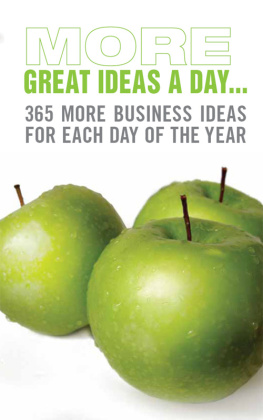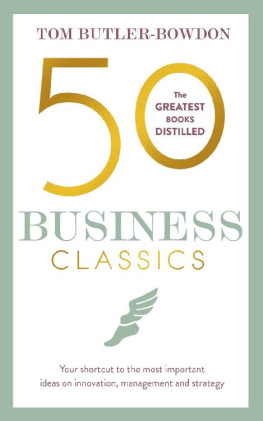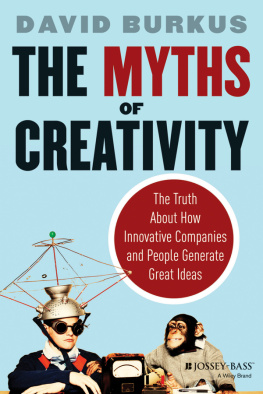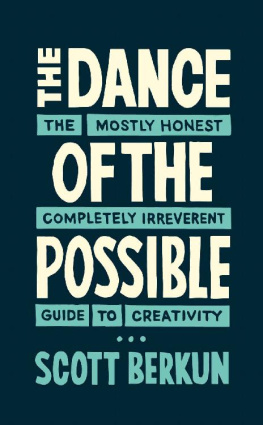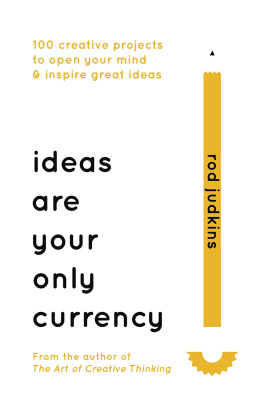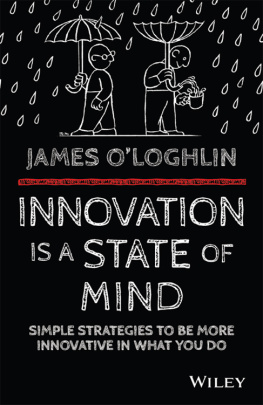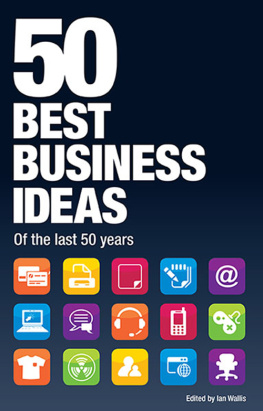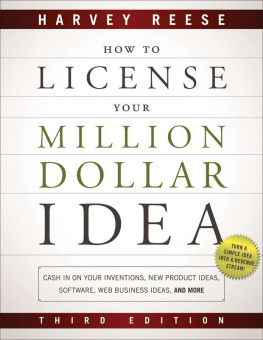Commitment to research accuracy
In the original edition of this book, I took great pains to get the facts, sources, and references right. However, as youll learn in , history is more challenging than we think it is.
In this paperback edition, we corrected more than 40 issues, from typos to misreferences to clarifications of facts from history. They were mostly minor issues that were easy to correct. In some cases, I found better evidence and more accessible references.
But one can never be sure. It is possible, despite enlisting the help of an army of fact-checkers, that I have misrepresented facts or distorted the work of others, or that new evidence will surface that contradicts the facts I use. I promise that any oversights are unintentional. More importantly, I believe my arguments and the thoughts they provoke are valuable despite any inaccuracies.
As Ive committed to in the past, Ill do my best to collect and review any corrections or improved references as Im made aware of them.
All of the URLs and references found in this book will be available online for easier access. Visit www.mythsofinnovation.com to either report issues or make use of the references for further study. If you find an issue that has not been listed, please report it at the above URL for other readers benefit and my own.
Preface for the paperback edition
By idolizing those whom we honor, we do a disservice both to them and to ourselveswe fail to recognize that we could go and do likewise.
Charles V. Willie
The other day, while dropping off my dry cleaning at the laundromat, I noticed a bright neon sign. It read, Innovative dry-cleaning service, which, given my authorship of this book, piqued my curiosity. With shirts and pants in hand, I went to the counter and inquired, So tell me, what are your dry-cleaning innovations? The young lady behind the register offered only a blank stare. I had to point to the sign and explain what the word meant before she acknowledged, as if I were an idiot, that it was just marketing. As far as she knew, as daughter of the stores owner, there was nothing innovative in how they cleaned clothes (nor how they helped customers).
The word innovation has fallen on hard times. There is no innovation superhero, flying around at innovative speeds, using innovative ninja moves to prevent abuse of the word. Simply saying something is great doesnt make it so, yet as the success of marketing and advertising demonstrates, this doesnt stop people from trying. The i-word is thrown around so frequently it no longer means anything.
Today, and for a long time, the majority of what most people believe about ideasfrom where they originate to how they are made into things that change the worldis based on sketchy sources. We watch movies featuring the success stories, and we hear legendary tales of geniuses and their flashes of insight, tales passed down from generation to generation, but few go back to see whether any of those stories actually happened. And when we try to work with ideas ourselves, we experience a reality so distant from what weve been taught to expect that its easy to give up. Even if we fight through the confusion, were chasing our guesses about what the process is supposed to be like. My goal is to turn all of this around.
Ive spent years studying the history of creative thinking, especially around invention and entrepreneurship, digging up the truths behind the legends. I wanted to uncover what really happened because I believed knowing the truth would give me the greatest chances of learning and improving my own abilities, and teaching others to do the same. Each chapter explores one of the 10 most pervasive and misleading myths, reveals the facts, and offers advice and wisdom that you can apply to your own work. This is the book, based on evidence rather than wishful thinking, I wish someone had given me when I started my career almost 20 years ago.
Before I get out of your way so you can begin , I need to say one last thing about the word innovation . Its not a word Im fond of. Its used all too often today, and it has lost any significance. More useful to you, perhaps, is that of its many meanings youll find in a dictionary, the most potent is significant positive change . If the thing offered represents a significant positive change for whomever it is offered to, by definition, its an innovation. This calls into question statements such as We innovate every day or We are in the innovation business, because if something is done regularly, how can it represent significant change? Even if its possible, the turmoil that rate of change would create is unlikely to be positive (except for the handful of people who profit from the chaos). I carry a chip on my shoulder for anyone who uses the word innovation too often.
This definition also burdens creators to understand the recipients perspective of whatever they make. If its a positive change for the customer, even if the ideas being used have been around for years, its an innovation to them. This is great: before anyone can call something an innovation, they need to find happy customers who would also use that label for it (or who would say, This is a significant positive change!). This might just mean that whats old and tired to you is the new hotness to someone else. Over a billion people in the world dont have electricity or clean drinking water. If you put a working 7-Eleven mini-mart, with refrigeration, plumbing, and WiFi Internet access next to their hut, theyd certainly call the store, and everything inside, an innovation. And by the same token, if a space alien landed in your backyard with an old, broken-down warp engine, something he and all his alien buddies have had for years, it would still be an innovation to you.
To practice what I preach, the word innovation appeared in the hardcover edition of this book about 65 times, down from 150 in the early manuscript. For this paperback edition, I added four new chapters focused on putting ideas to work, which raised that count slightly.[] Tracking the word was a specific goal because it forced me to communicate clearly. I recommend you and your colleagues do the same; for example, if you mean We want our business to grow, say itdont mask the meaning by using the i-word. If you want to be perceived as being a creative company, fine. Perhaps your ambition is to make products that lead in market share, or to have passionate, happy customers. Excellent. Write those exact words down. Reserve the i-word fornothing. In the few instances where you are honestly taking the big risks necessary to achieve significant positive change, talk about what those risks are and what the positive changes will be. The specifics of what you mean will inspire and empower more people than any overused business-school marketing jargon ever could.


